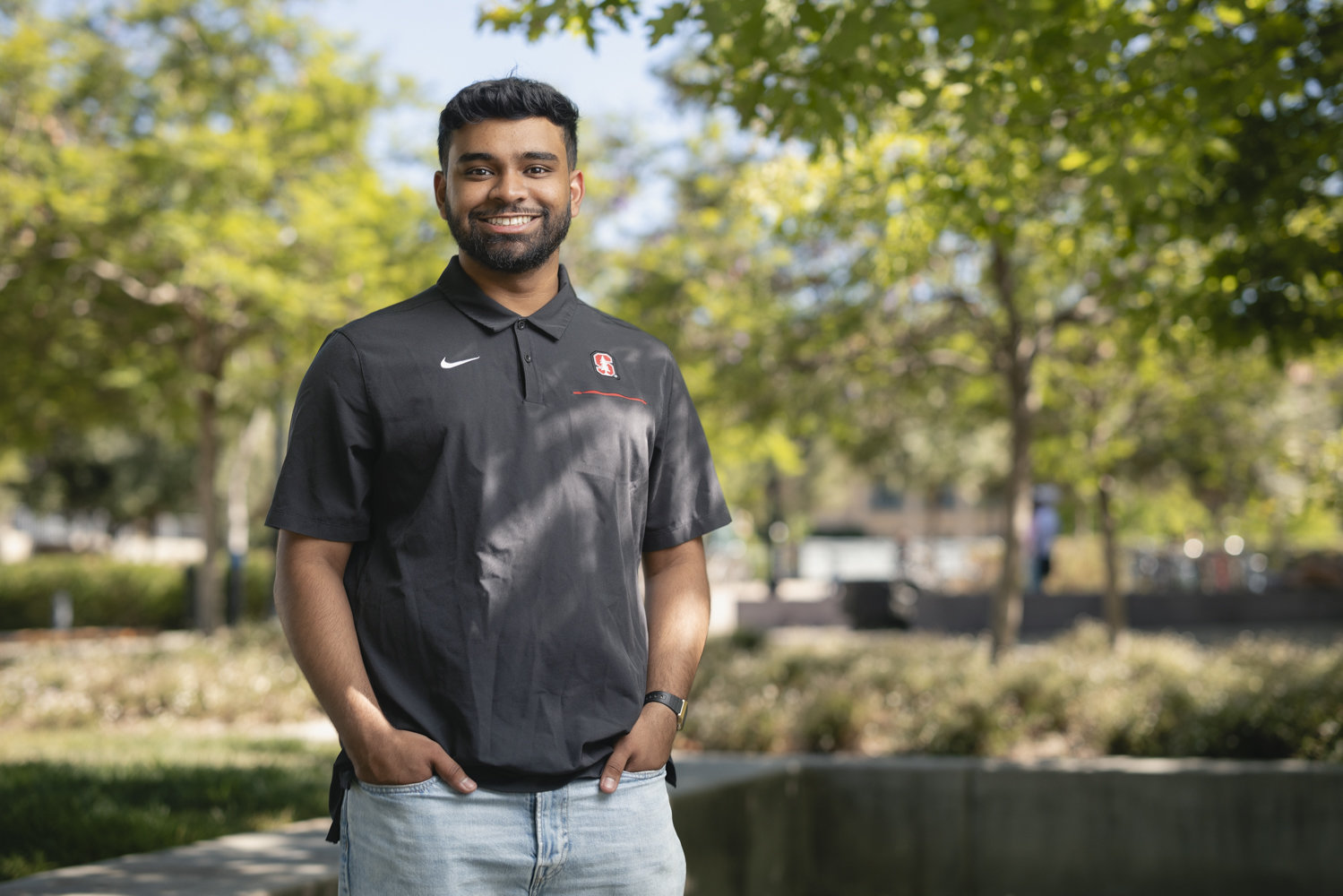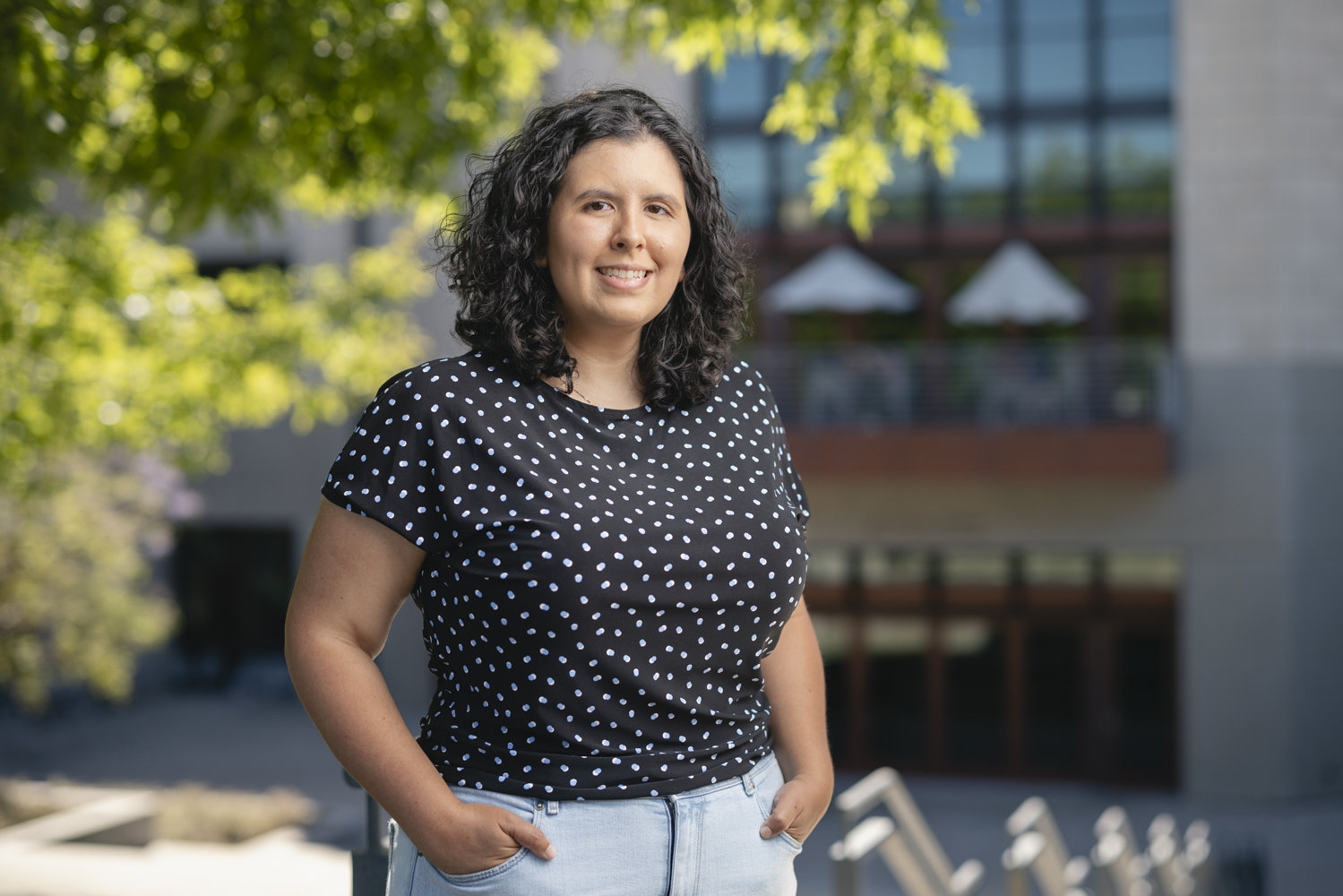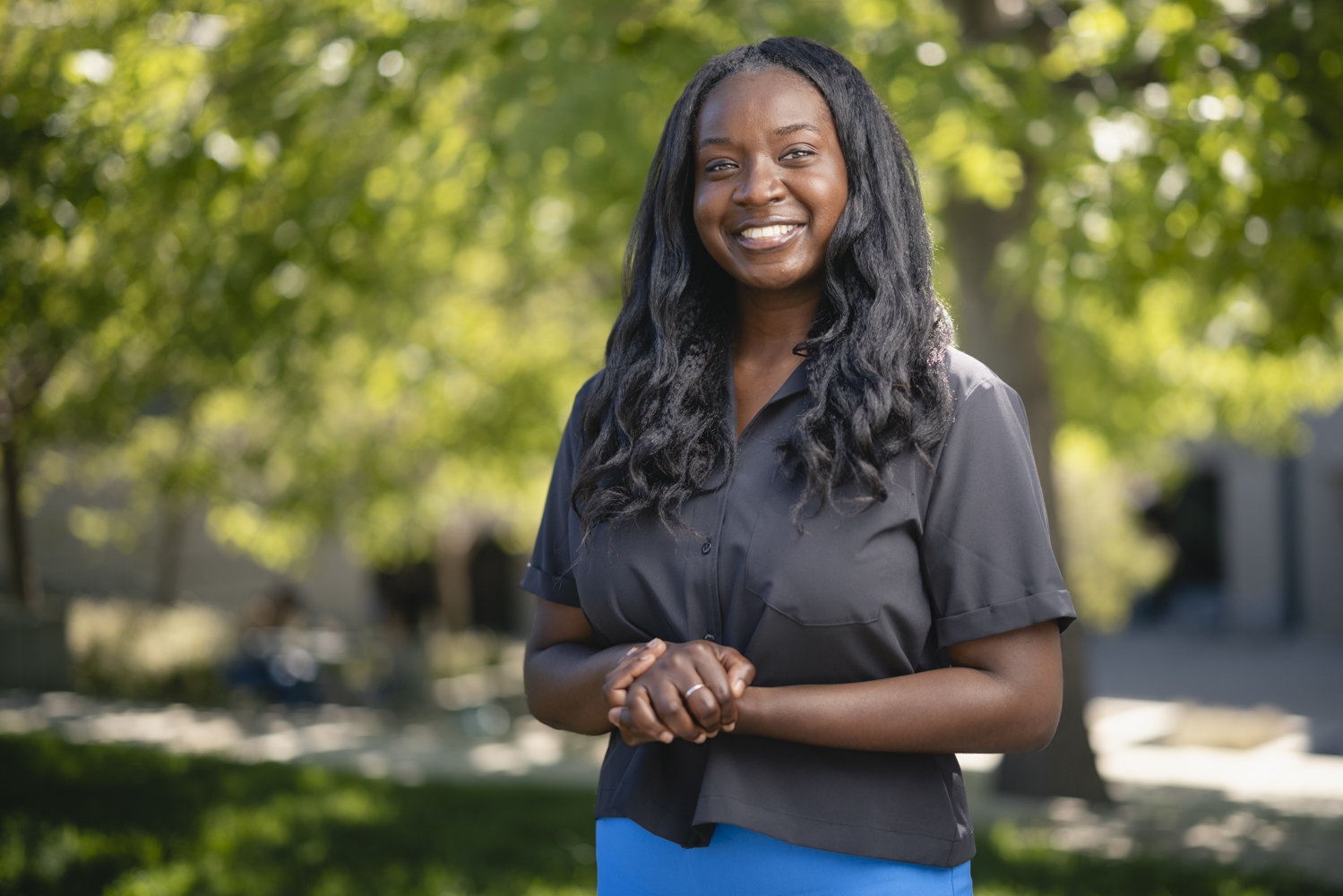2024 graduates prepare to turn the page
On June 16, as giddy, elated – and very accomplished – engineering students gather to celebrate Commencement and receive their hard-earned degrees, a number of very personal stories will reach the end of an important chapter. Each is unique, but all share the common experience of a Stanford engineering education.
Among them will be Khaled Khan, BS in computer science; Kayla Kemler, MS in chemical engineering; and Rachel Adenekan, PhD in mechanical engineering.
“I’m really excited and can’t wait to show my parents their first graduation,” says Khan. “If you’d told me just a few years ago in high school – when I was working two minimum wage jobs and trying to keep everything together – that I would ever be graduating from Stanford and have a job lined up, I would have said you were crazy. But here I am.”
Three students, three stories
Born and raised in Atlantic City, New Jersey, Khan, a first-generation college student, is the son of parents who immigrated to the U.S. from Bangladesh. The family didn’t have the resources to replace broken items, so he learned early to tinker with – and repair – everything from remote control cars to television remotes. That early interest in engineering, along with a QuestBridge National College Match Scholarship, brought him to Stanford, where he planned to study electrical engineering.

“But then I took CS 106A, the very introductory course everyone takes, and loved it. That became the first step in my computer science journey.”
Kemler, a senior scientist at Unilever who has a BS in chemical and biomolecular engineering from Cornell, saw a master’s degree as an opportunity to advance her career.
“I work in product engineering, and I wanted to be able to do more in-depth work,” she says. “I knew I wanted to get an advanced degree, but I needed something remote and flexible because I didn’t want to quit or take a sabbatical. I like my job and was advancing well.”
When the pandemic hit, Kemler decided to apply to Stanford Engineering’s Honors Cooperative Program (HCP), which allowed her to earn her master’s degree in chemical engineering remotely. She enrolled in fall 2021, and opted to spend her final quarter on campus while she simultaneously works remotely for Unilever.
“There were courses I wanted to try that were totally new to me, such as machine learning, and I preferred to do those in person,” she says. “It’s amazing being here.”
Adenekan has a BS in mechanical engineering from MIT and entered Stanford in 2017 as a master’s student in mechanical engineering, adding her PhD work in her third quarter. (The School of Engineering has now moved to direct PhD admission.) The daughter of parents from Nigeria and Trinidad, she was raised in Houston in the shadow of Texas Medical Center, where she dreamed of becoming a doctor until a high school engineering program introduced her to the intersection of engineering and medicine. Her current research centers on a project using smartphones as tools to monitor sensory function in people at risk of developing medical complications like diabetic peripheral neuropathy.
“I decided to pursue the PhD because I didn’t feel like my existing skill set would enable me to lead research in this field,” she says. “As an engineering PhD student here, I knew I’d be able to collaborate with other groups on campus to do the kind of work that doesn’t just sit in the lab but eventually translates to clinical care.”
Finding a path around obstacles
Like most students, Khan, Kemler, and Adenekan all faced significant obstacles enroute to graduation. For Adenekan, they included a pause to her lab work due to the pandemic, a series of health problems, and a courageous decision to switch labs and academic focus late into her PhD program, which required mastering a new set of skills. Kemler knew she would be juggling a master’s degree program with a full-time job, a balancing act she says was both mentally taxing and isolating at times. Khan had the universal challenge of learning the time management and living skills needed in college, along with the COVID-specific problem of trying to make important friendship connections during his frosh year amid social distancing. He attended fall classes remotely from his New Jersey home, then moved on campus, where he experienced most of his first year in his dorm room.

“I’d watched all these videos, and the college experience looked like so much fun – working late at the library, going to classes, hanging out with friends and doing dorm trips. That was all disrupted,” he says. “It wasn’t easy to meet people. As a freshman and sophomore there’s normally more time to hang out and do all that, but that gets harder in the last two years when everyone is busier, and you have to be more intentional. It was challenging for everyone.”
All three found help and support from a range of resources. Khan sought out the Stanford First Generation and/or Low-Income Student Success Center (FLI), where he met friends facing similar challenges, found information on programs and research opportunities, and eventually took a job working with FLI students. Kemler found support both from family and her supervisor at Unilever and was able to organize weekly study nights with a colleague also working on a remote master’s degree. Adenekan’s support circle included family, a chat group for Nigerian students, the Black Graduate Student Association, and Stanford’s Enhancing Diversity in Graduate Education Doctoral Fellowship (EDGE) program.
Looking forward with new perspective
As Commencement approaches and all three prepare to leave Stanford, each spoke of the pride of accomplishment, increased confidence, and personal growth.

“I’ve learned to not be afraid of getting out of my safe place, to meet new people and do new things,” says Khan, whose parents and extended family will attend his graduation, and who will soon begin work as a security engineer at Reddit. “I’ve also learned that chasing success too much can be a problem, and that you sometimes learn more from failure.”
Kemler, who was promoted to senior scientist at Unilever during her master’s program, finds pride in seeing her long-range plan come to fruition. She’s looking forward to her parents attending her graduation.
“I stepped outside my comfort zone and broke into several new fields with this degree, which broadened and deepened my knowledge,” she says. “It used to be hard to correctly articulate my ideas at work and to figure out if they were good or not. Now I’m able to have better conversations with my colleagues and to really contribute to the innovation we do.”
Adenekan, who aims to continue leading research into the design and development of innovative health technologies, is looking forward to her parents and extended family joining her for graduation.
“I’m more confident now, and proud that I made courageous decisions and stuck to them,” she says. “When I came to Stanford, I thought the hardest part of the PhD would be the research, the actual work. For me, that was the easy part. The complicated part was managing my health, managing tough advising situations, and discovering so much about building relationships and finding support in different places. I learned the life part.”




